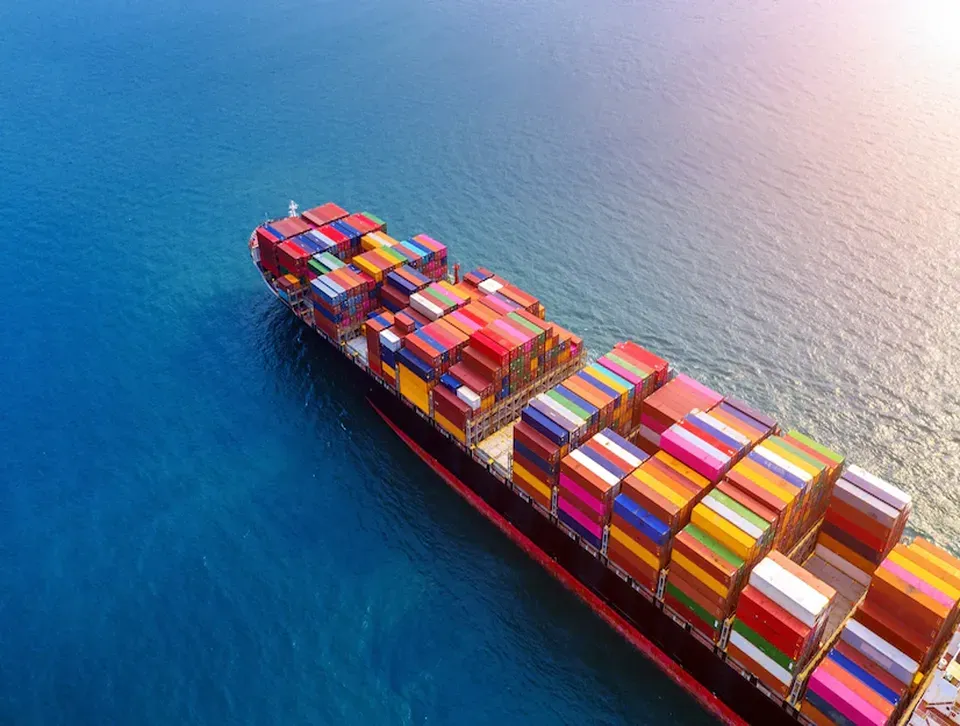- By TOP CHINA FREIGHT
- August 27, 2025
- Shipping
Table of Contents
Shipping from China to Canada is one of the cornerstones of global trade, powering industries from e-commerce and electronics to automotive and construction. Whether you are a small seller sending parcels to Toronto or a large importer managing container loads to Vancouver, understanding costs, transit times, and customs regulations can make or break your logistics strategy.

Why Businesses Choose Shipping from China to Canada
Canada is one of China’s top trading partners, with annual trade volumes exceeding $100 billion. Businesses opt for shipping from China to Canada because:
- The shipping network is reliable and well-developed.
- Canadian ports like Vancouver and Montreal are strategic gateways for North America.
- Multiple transport modes offer flexibility in balancing cost and speed.
Understanding these advantages helps you plan shipments that meet your budget and timeline.
Transportation Modes for Shipping from China to Canada
Sea Freight – Cost-Effective for Bulk Cargo

Sea freight is the most common method for shipping from China to Canada. It’s ideal for large, heavy, or non-urgent cargo.
| Service Type | Transit Time | Best For | Cost Estimate |
|---|---|---|---|
| 20ft FCL | 25–30 days | Small or medium shipments | $2,800–$4,000 |
| 40ft FCL | 25–30 days | High-volume or heavy cargo | $4,500–$7,000 |
| LCL (Less-than-Container Load) | 28–35 days | Mixed or smaller shipments | $90–$130 per CBM |
Advantages:
- Lowest cost per unit for large volumes
- Wide coverage of Canadian ports
- Flexible consolidation options
Tips:
- Book space early during peak seasons.
- Use FCL for better cost efficiency if your load exceeds 15 CBM.
Air Freight – Speed When Time Matters

Air freight is the best solution for businesses needing fast delivery. Major Canadian airports like Toronto Pearson (YYZ) and Vancouver International (YVR) handle thousands of tonnes of goods from China daily.
| Weight Range | Transit Time | Cost Estimate |
|---|---|---|
| 100–300 kg | 5–7 days | $5–$7 per kg |
| 300+ kg | 5–10 days | $4.5–$6.5 per kg |
Best For:
- Electronics
- Fashion replenishments
- Spare parts or high-value items
Pro Tips:
- Consolidate smaller shipments to save on per-kg rates.
- Avoid peak seasons like Christmas and Chinese New Year to prevent delays.
Express Courier Services

For parcels under 100 kg, couriers like DHL, FedEx, UPS, and SF Express provide door-to-door service.
Key Highlights:
- Transit time: 3–7 days
- Includes customs clearance
- Best for small, high-value shipments
Multimodal Transport

Combining modes — like sea-air or air-truck — is a cost-effective way to reduce transit time while saving on expenses. For example:
- Ship by sea to the U.S. West Coast, then truck to Canadian destinations.
- Use air freight to Vancouver, then truck for inland delivery to Toronto or Calgary.
Major Ports and Hubs for Shipping from China to Canada
China’s Key Ports:
- Shanghai
- Ningbo
- Shenzhen
- Qingdao
- Guangzhou
Canada’s Key Ports:
- Vancouver – Main entry for the west coast
- Montreal – Ideal for east coast and central Canada
- Halifax – Suitable for Atlantic provinces
Pro Tip:
Choose the closest port to your final destination to save on domestic trucking costs.
Customs Clearance for Shipping from China to Canada
Smooth customs clearance prevents delays and extra costs.
Required Documents:
| Document | Purpose |
|---|---|
| Commercial Invoice | Declares product value for duties |
| Packing List | Provides shipment details |
| Bill of Lading / Air Waybill | Proof of carriage |
| Certificate of Origin | Required for trade agreement benefits |
| Import License (if applicable) | Needed for restricted goods |
Tips:
- Use accurate HS codes to calculate duties.
- Work with a licensed customs broker.
- Prepay duties to avoid clearance delays.
Factors Affecting Shipping Costs
Larger and heavier goods increase costs.
Sea freight is cheapest; air freight is fastest but costlier.
Charges differ across Canadian ports.
Rates spike during Q4 and Chinese New Year.
Can impact freight quotes weekly.
Cost-Saving Strategies
To optimize your budget when shipping from China to Canada:
- Book early during peak seasons for better rates.
- Consolidate shipments to fill containers efficiently.
- Negotiate long-term contracts with carriers.
- Use digital platforms for real-time rate comparisons.
- Plan around peak seasons to avoid surcharges.
Insurance and Risk Management
Protecting your goods during transit is critical.
- All-risk insurance covers loss, theft, or damage.
- Recommended for high-value shipments or fragile cargo.
- Ensure your insurance matches the declared value of your goods.
Technology and Real-Time Tracking
Modern shipping platforms make shipping from China to Canada more transparent. Benefits include:
- Real-time location tracking
- Instant rate comparison
- Digital document storage
- Automated alerts for delays or route changes
Choosing the Right Freight Forwarder

A reliable partner can help you navigate complex logistics. Look for forwarders that:
- Have proven expertise in Canada-bound shipments
- Offer transparent cost structures
- Provide multimodal solutions and customs support
Conclusion
Efficient shipping from China to Canada is achievable with the right planning and partners. By choosing the right mode, managing customs requirements, and leveraging cost-saving strategies, you can ensure timely, cost-effective, and reliable deliveries. For consistent success, partner with a trusted freight forwarder who can handle everything from booking and tracking to customs clearance and insurance. This ensures your supply chain stays competitive and resilient, no matter the market conditions.
Need a Shipping Quote?
If you want expert guidance and peace of mind, our team is ready to assist.
TJ China Freight offers tailored solutions to help businesses of all sizes ship more reliably from China.
FAQs
Q1:How long does sea freight take from China to Canada?
Typically, 25–35 days depending on the port of origin and destination. FCL is usually faster than LCL due to fewer handling steps.
Q2:What’s the cheapest way to ship from China to Canada?
Sea freight is the most cost-effective, especially for full container loads (FCL). LCL is cheaper for smaller volumes but less cost-efficient per CBM.
Q3:How can I avoid customs delays?
Prepare accurate invoices, use the correct HS codes, and work with an experienced customs broker to handle clearance smoothly.
Q4:Is cargo insurance necessary?
Yes, especially for high-value or fragile items. It protects you against loss, damage, or theft during transit.
Q5:How much does it cost to ship a container from China to Canada?
A 20ft container generally costs $2,800–$4,000, while a 40ft container costs around $4,500–$7,000, depending on the season and route.
